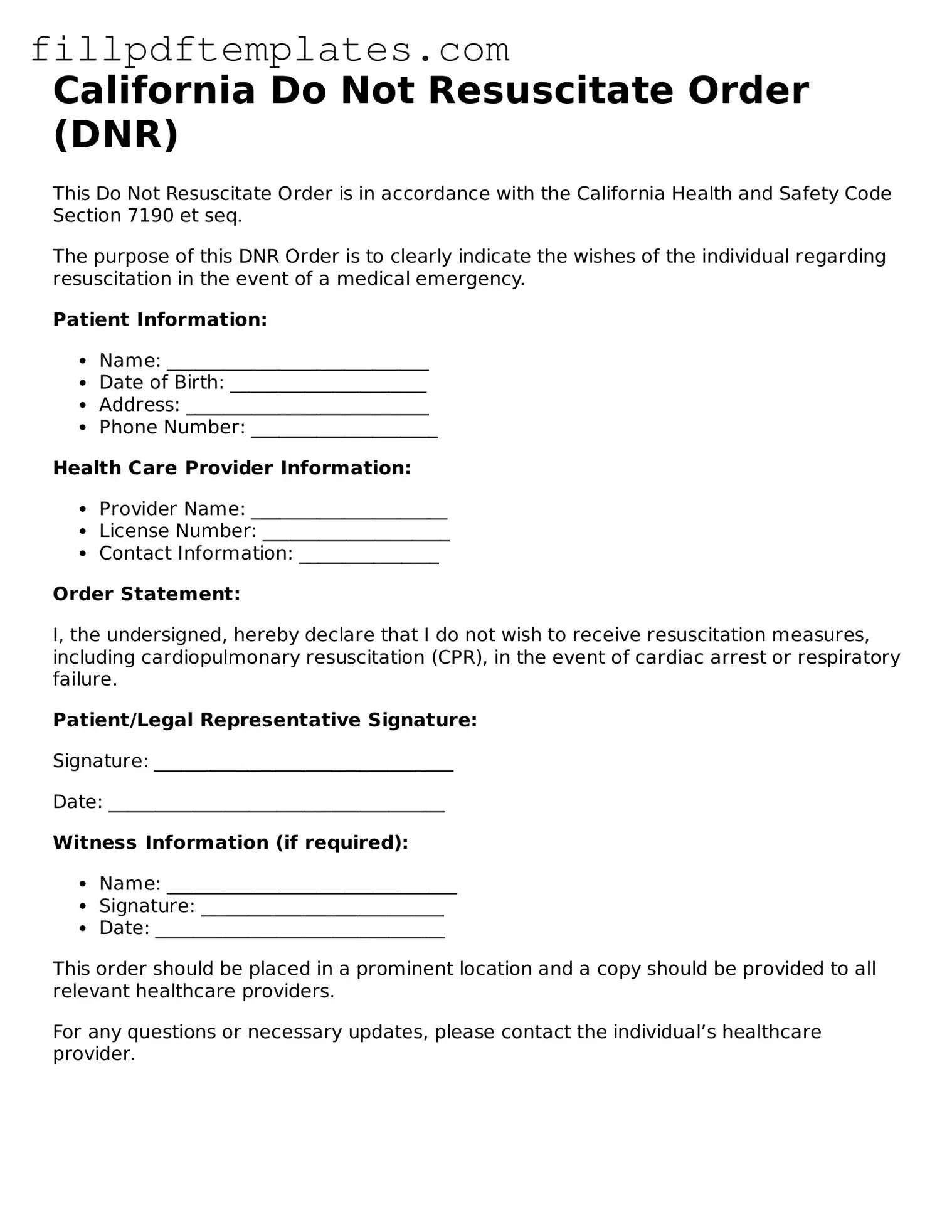Blank California Do Not Resuscitate Order Form
A California Do Not Resuscitate (DNR) Order form is a legal document that allows individuals to express their wishes regarding resuscitation efforts in the event of a medical emergency. This form is essential for ensuring that a person’s preferences for end-of-life care are respected and followed by healthcare providers. Understanding how to fill out this form can empower individuals to make informed decisions about their medical treatment.
Ready to take control of your healthcare decisions? Click the button below to fill out the Do Not Resuscitate Order form.
Get Form
